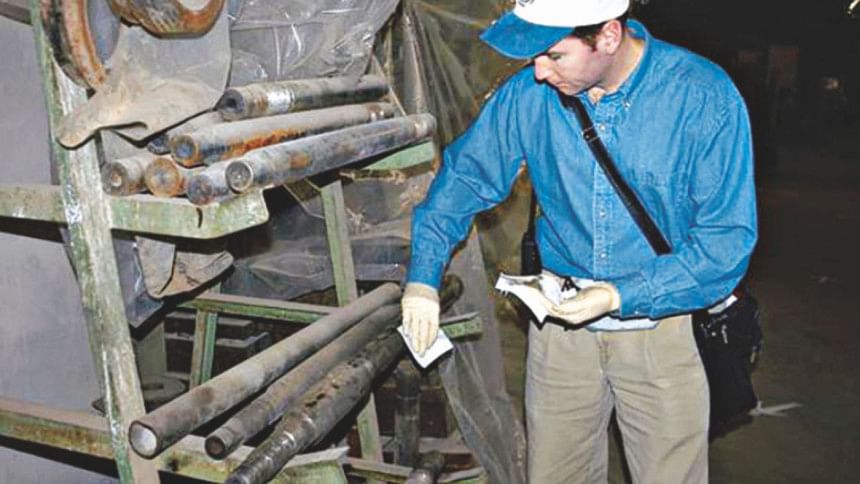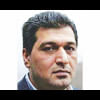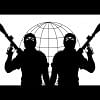A war for oil #10: Massive hunt for WMD yielded nothing

After the Iraqi invasion, thousands of inspectors looked for the WMD all over Iraq. All they found were some obsolete chemical plants. Thousands of analysts and translators poring over millions of pages of documents came up with zero evidence of Iraqi WMD, and yet Blair claimed the war was justified. Charles Duelfer, the head of the ISG, later wrote in his report the myth of the Iraqi WMD was created by "mistaken evidence and wrong conclusions"!
The invasion was over. Saddam was dragged out of a "spider hole" in ad-Dawr, near Tikrit. Now it was time to search for the Weapons of Mass Destruction, the alleged existence of which justified Blair's and Bush's illegal war.
Immediately after the war, CIA's Iraq Survey Group (ISG) sent in 1,200 inspectors who searched for evidence with a fine-tooth comb for 15 months and then came up with its findings – Saddam did not have any such thing. There were only outdated chemical weapon facilities that used to churn out shells during the Iran-Iraq war. Iraq was nowhere near acquiring any nuclear capability although Saddam had from time to time expressed his interest to possess such weapons.
The CIA found no concrete plan to start WMD production using Iraq's old pesticide plants, as was alleged by the vendors of war. In their extensive interviews with Iraqi military personnel, the inspectors learned that the Iraqi leader never even discussed starting production with anyone. And he clearly lost interest in biological weapons.
The ISG and the UN inspectors together spent $1 billion and visited 1,700 sites in search of WMD and yet nothing turned up.
THE WHOLE BASIS OF THE INVASION WAS A HOAX
Charles Duelfer, the head of the ISG, in his report, wrote: "I still do not expect that militarily significant WMD stocks are hidden in Iraq. ISG found no direct evidence that Iraq, after 1996, had plans for a new BW (biological warfare) programme or was conducting BW-specific work for military purposes. There appears to be a complete absence of discussion or even interest in BW at the presidential level."
If so, then how had Bush and Blair been seeing Saddam's WMD all along their war preparation? In his foreword, Duelfer tried to explain the imagined WMD as set assumptions of the western mind.
"Western thought is filled with assumptions. Like the operating system of our computers, we have logic and assumptions that are virtually built in. We have been applying them successfully so long in our own frame of reference that we forget they are present and shape our thinking and conclusions," he wrote.
Then he attributed the creation of the WMD myth to "...distant technical analysts mistakenly identified evidence and drew incorrect conclusions."
The ISG conducted its massive hunt with experts from the USA, United Kingdom and Australia who gathered and analysed data to prepare a report on Iraq's WMD program. Several participants were former United Nations inspectors with long experience in Iraq.
A large facility housing more than 900 staff members in Qatar recorded, summarised, and translated documents. When the report was written, this facility had about 36 million pages that had been scanned into a database. Roughly a third of these had been examined by a linguist and a gist was prepared. They, together with a 190-member linguistic team, rummaged through millions of documents and helped interrogate the so-called High Value Detainees.
Two laboratories, one British and one American, analysed materials suspected of being related to WMD. Samples included nerve agent rounds, mustard shells, and a wide range of dangerous chemical substances.
The ISG included several former UN inspectors and Iraqi WMD experts with over a decade of experience with the Iraqi WMD programs.
While the ISG went on with its mission, the British intelligence MI6 chief John Scarlett tried to influence the investigation by suggesting inclusion of "irrelevant" information".
The Mail on Sunday reported that Scarlett had tried to "insert untruths" into the final ISG report about Iraq that it had or was trying to develop smallpox based bioweapons and that Saddam had mobile biological weapons laboratories. This effort was rejected by ISG.
However, after the ISG report revealed the lies of the US and UK governments, both Bush and Blair insisted the findings justified their war.
The White House in October 2004 said the report showed Saddam's intent and capability of producing WMD. However, Democrats used the report to criticise Bush alleging he misled the US citizens.
A top Democrat senator, who sits in the Armed Services Committee, said: "We did not go to war because Saddam had future intentions to obtain WMD."
On the other side of the Atlantic, Blair said although the report showed no evidence of WMD but it said Saddam had a plan to develop it.
The UN arms inspector Hans Blix, who had long ago concluded there was no WMD, again spoke after the ISG report and told AP that he hoped Bush and Blair would now admit Iraq invasion was a mistake.

 For all latest news, follow The Daily Star's Google News channel.
For all latest news, follow The Daily Star's Google News channel. 







Comments